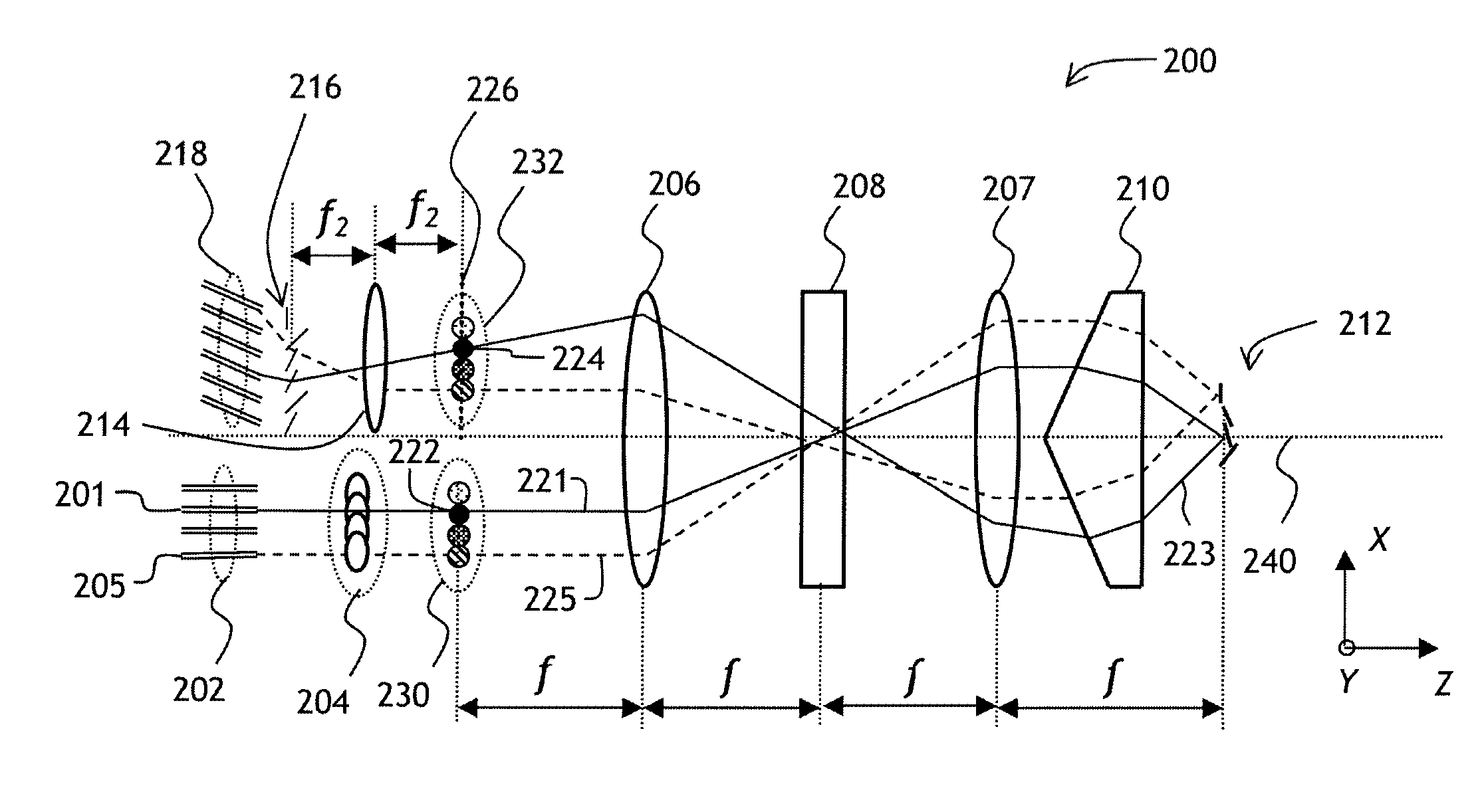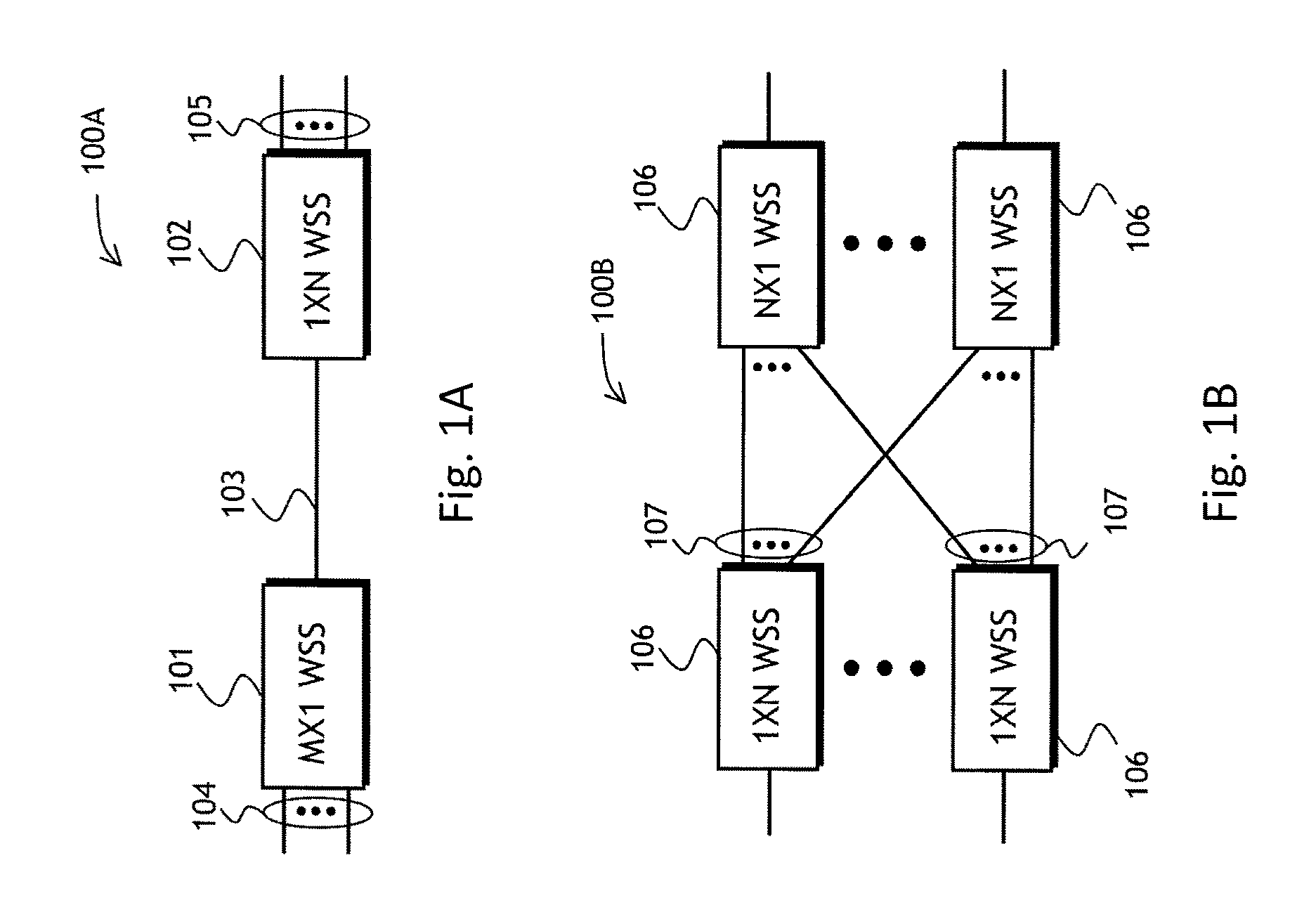M x n wss with reduced optics size
a technology of optical aberration and m x n, applied in optics, instruments, optical light guides, etc., can solve the problems of limited wavelength channels at the same wavelength in the same network, the above-mentioned 1n wss modules are useful in agile optical networks, and the optical aberration is reduced. , to achieve the effect of reducing optical aberration
- Summary
- Abstract
- Description
- Claims
- Application Information
AI Technical Summary
Benefits of technology
Problems solved by technology
Method used
Image
Examples
Embodiment Construction
[0035]Referring to FIG. 3A, an M×N wavelength selective switch (WSS) 300 in accordance with one embodiment of the instant invention is shown. The WSS 300 includes an input fiber array 302 of M input fibers, a first lens 304A, a second lens 304B, a third lens 306, a fourth lens 307, a wavelength dispersive element 308, a first switching array 312, a second switching array 305, and an output fiber array of N output fibers (not shown).
[0036]The input fiber array 302 includes a plurality of input optical fibers. In one embodiment the input fiber array 302 is a micro collimator array (MCA) including an array of microlenses for expanding and substantially collimating the beams emitted from the plurality of input optical fibers, to provide more efficient switching. In this case, each microlens is typically disposed adjacent to the end of the corresponding optical fiber at the appropriate distance.
[0037]The lenses 304A, 304B, 306, and 307 are elements having optical power. For example, in o...
PUM
 Login to View More
Login to View More Abstract
Description
Claims
Application Information
 Login to View More
Login to View More - R&D
- Intellectual Property
- Life Sciences
- Materials
- Tech Scout
- Unparalleled Data Quality
- Higher Quality Content
- 60% Fewer Hallucinations
Browse by: Latest US Patents, China's latest patents, Technical Efficacy Thesaurus, Application Domain, Technology Topic, Popular Technical Reports.
© 2025 PatSnap. All rights reserved.Legal|Privacy policy|Modern Slavery Act Transparency Statement|Sitemap|About US| Contact US: help@patsnap.com



